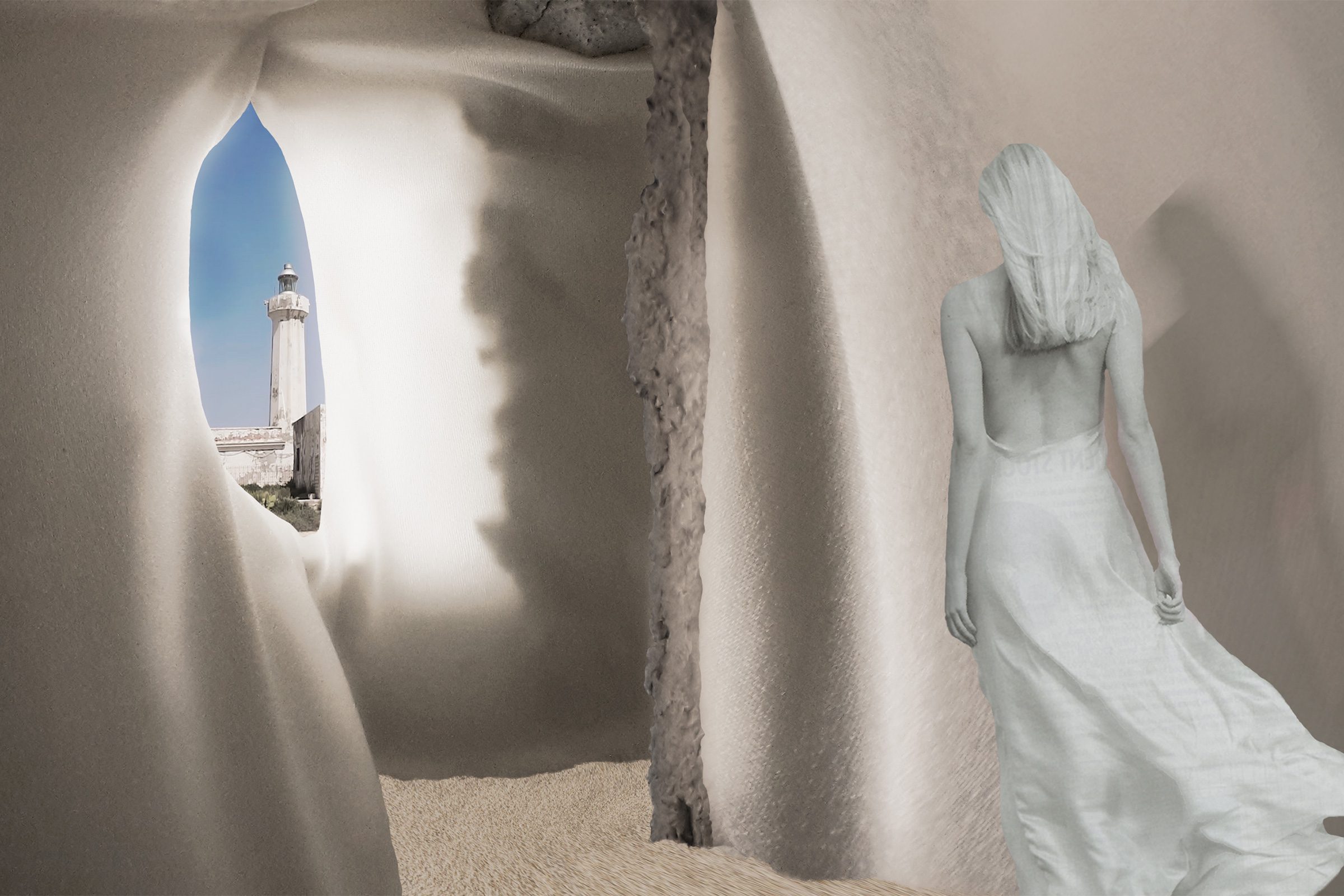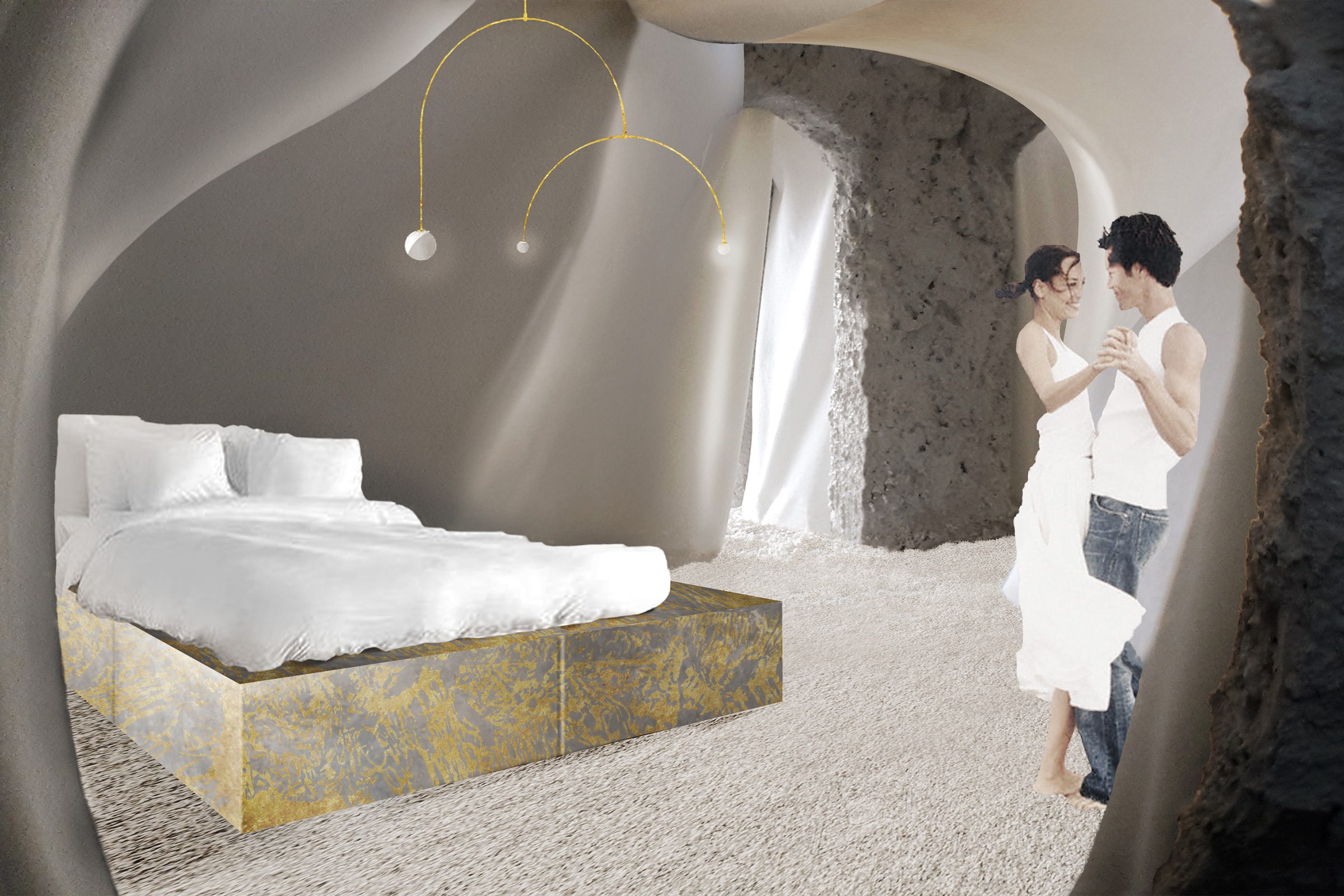Siracusa lighthouse, Italy

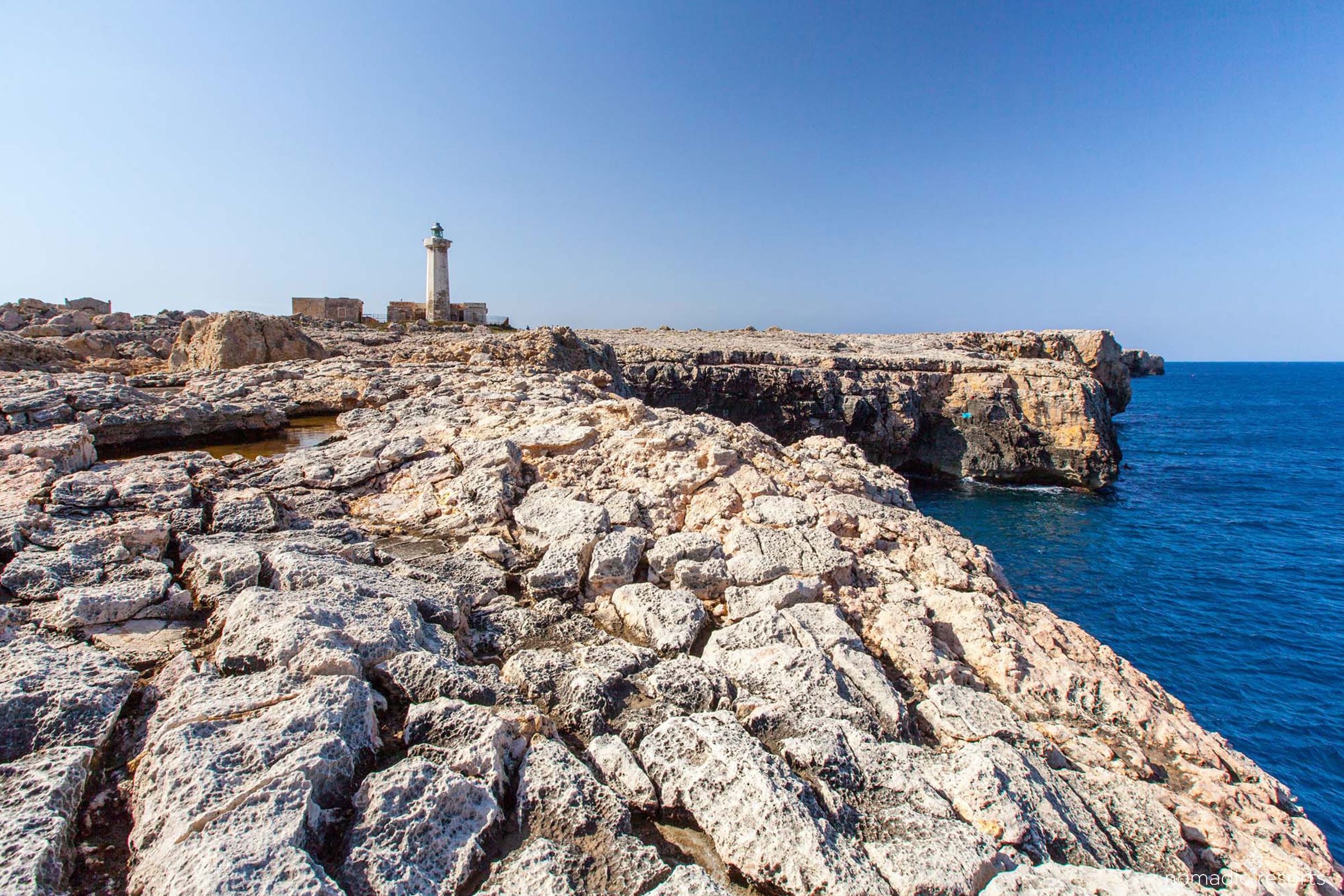
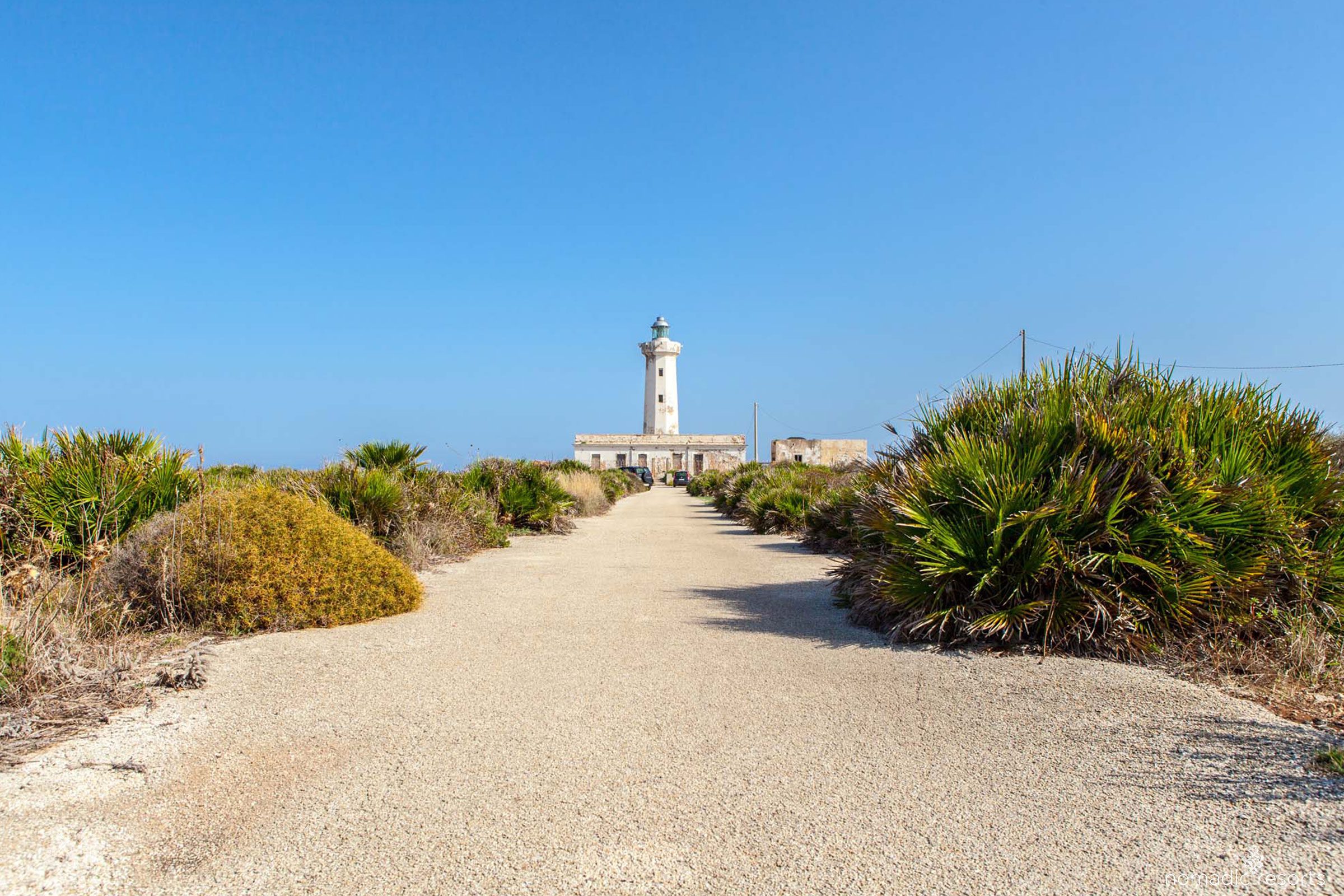

Throughout history, Sicily has always been one of the most important islands in the Mediterranean Sea due to its strategic central location. It’s geographic position on main maritime trade routes made it a hinge point for the overseas trade and exchange of culture.
The lighthouses have played an essential facilitating role in this process and although most of the them lost their original purpose of helping ships to navigate, they are still of great value to the local citizens and visitors due to the history they represent, their physical reference point along the beautiful coastline and their connotations of travel and adventure.
In order to regenerate the abandoned lighthouses around Sicily and make them economically sustainable, they will be turned into hotel accommodation units connected by a naval route. Guests will have the chance to explore Sicily and its surrounding islands by sailing from one lighthouse to another, regenerating their purpose as navigation points in a naval journey of adventure and providing guests with a unique seafaring experiences.
Since most of the lighthouses are located in environmentally sensitive locations or even protected areas, the change of function from safety beacon to hospitality lodging should have a minimal physical impact on the surroundings. Therefore, no new foundations should be poured; nor should any heavy renovation works take place on the existing structures. Ideally the buildings would benefit from only the minimum restoration needed to preserve their current beautiful poetic appearance as being nearly a ruin; yet still fulfill their new hotel function.


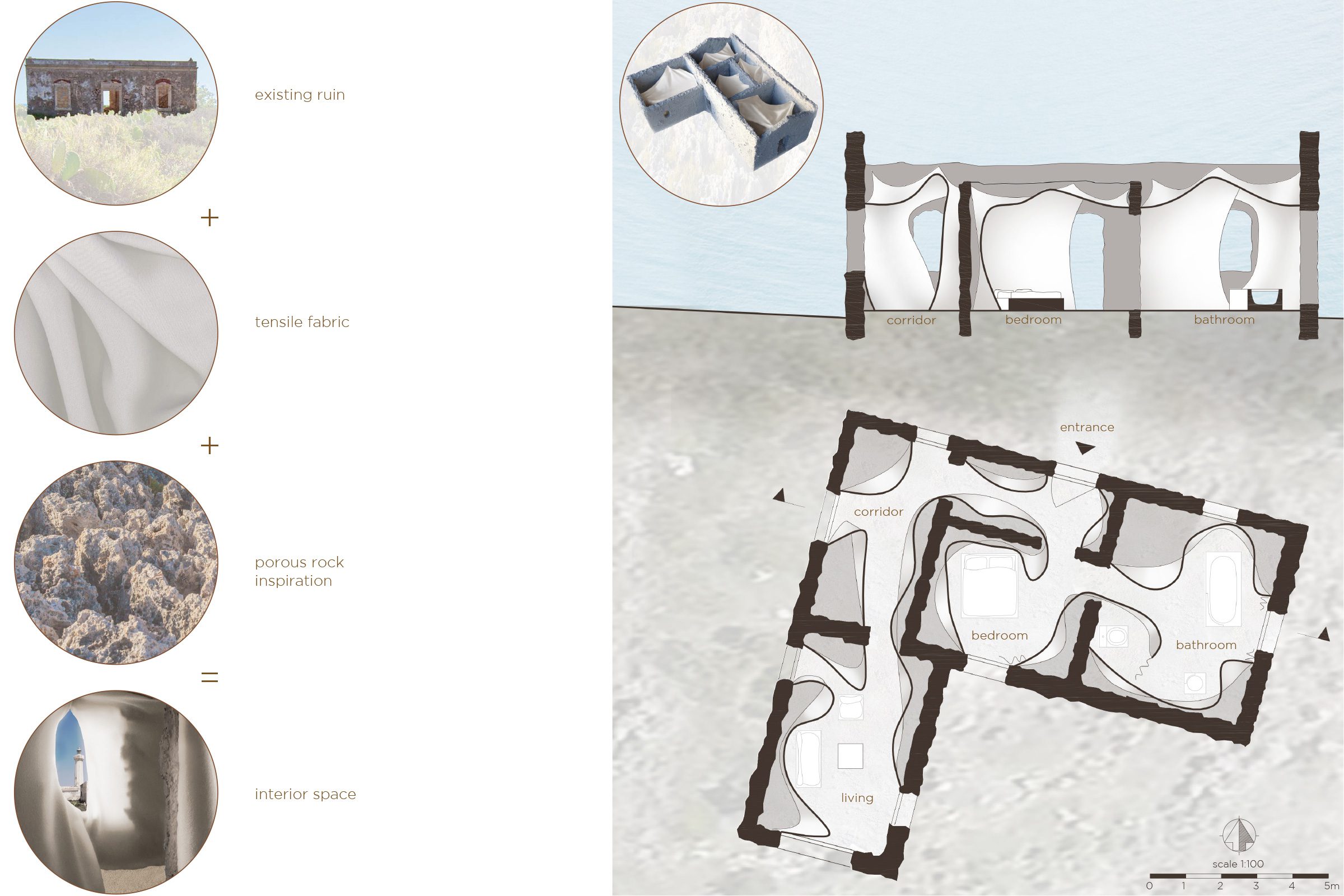
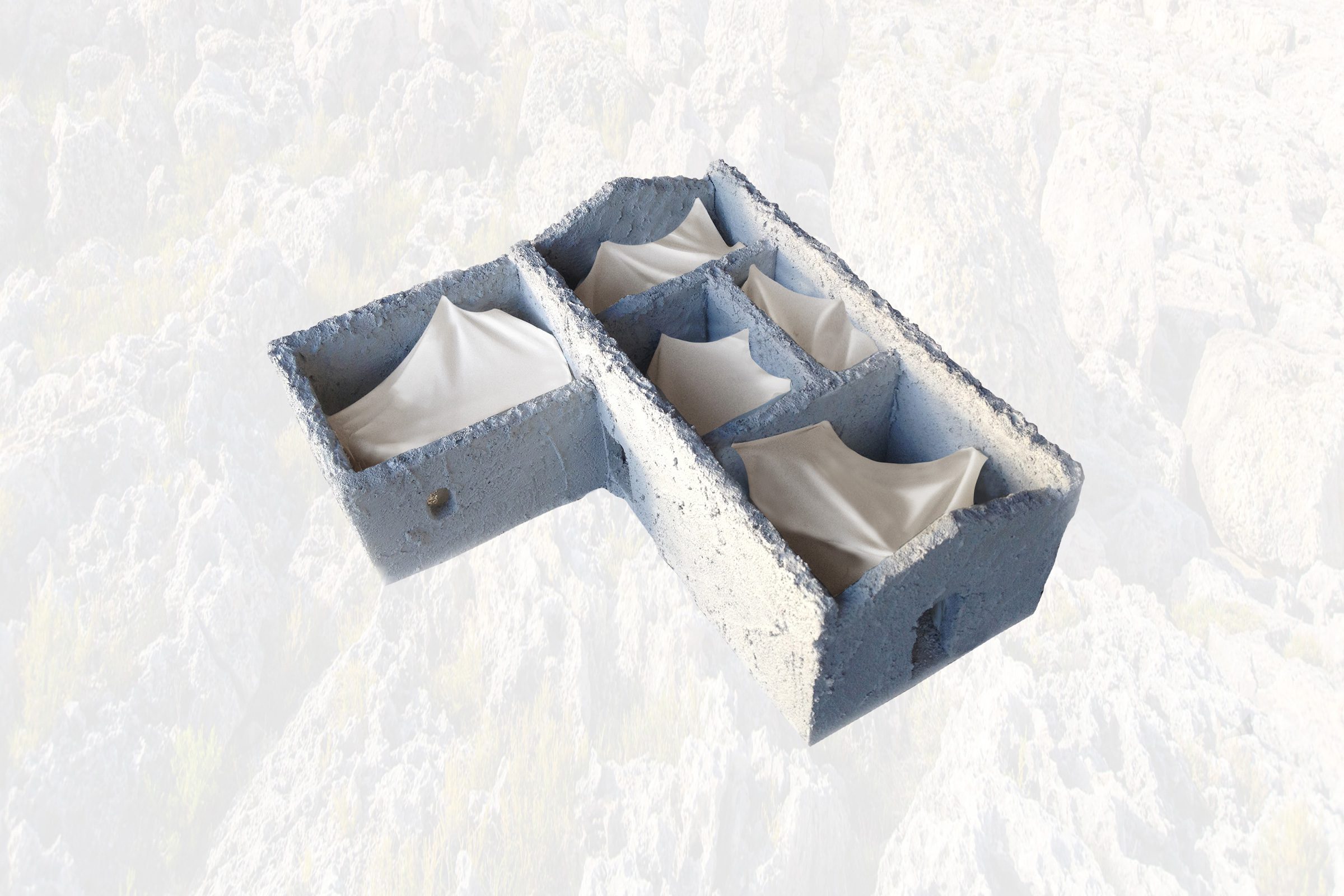
Each lighthouse on this naval route will only host the number of guests it can physically bear. The lighthouse of Murro di Porco near Siracusa will therefore host only one single hotel room, which will be located inside the ruins of the separate structure at the tower’s south side.
The accommodation will be created by simply hanging tented spaces inside the existing building, of which only the heavy walls have remained after decades of battle with the elements to which it has been exposed. These walls are heavily deteriorated and are characterized by the rough stonework and traces of several interventions throughout the past century (s).
‘The internal fabric envelopes create a clean, functional, hygienic interior that cleverly ties into the current glamping trend but still maintains a link with the nautical functions of the building’s past – the nautical language persists in the architecture; and the ghosts of ancient buccaneers will feel at home in the sail cloths, grommets, pulleys, and cables used to support the new structures’.
